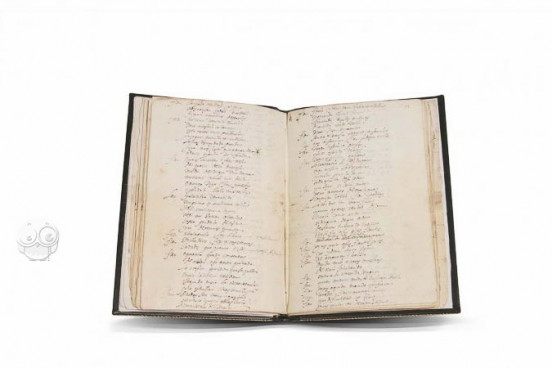Open Secret is the autograph manuscript of the comedy El Secreto a Voces by Pedro Calderón de la Barca, a prominent Spanish playwright. The title alludes to a way of communicating in public developed by the play’s principal pair of lovers, Laura and Federico. Written in Madrid and dated February 28, 1642, the manuscript survives in near-complete form, despite some restored or damaged leaves. It is an important resource for scholars of early modern literature and theater and for those studying the transmission of theatrical works.
Composed during his mature period, this work exemplifies the playwright's mastery of the Spanish Golden Age theatrical tradition, particularly the comedia de enredo (comedy of intrigue) subgenre that flourished in 17th-century Spain.
Dramatic Structure and Themes
The play presents a meticulously constructed dramatic architecture, featuring the hallmark elements of Calderonian comedies: elaborate plot mechanisms, mistaken identities, and romantic entanglements. The narrative centers on a complex web of secret affections and public deceptions in an aristocratic setting, where characters navigate the delicate balance between honor, desire, and social obligation.
Open Secret showcases Calderón's exceptional command of Spanish verse forms and his ability to craft memorable characters whose motivations and conflicts resonate beyond their historical context. The playwright employs sophisticated wordplay, dramatic irony, and parallel plot structures to create a work that functions both as entertaining comedy and as subtle commentary on social conventions of the period.
An Intricate Plot
Open Secret unfolds in the court of Parma, where the protagonist Federico secretly serves as an intermediary between his friend Duke of Mantua and the Duchess Flérida, with whom the Duke is enamored. Complications arise as Federico himself harbors feelings for Laura, a lady-in-waiting to the Duchess, while conducting their courtship through an ingenious system of coded communication (their "open secret"). The Duchess, suspecting this clandestine romance, grows increasingly jealous and attempts to thwart their relationship by intercepting their messages. The dramatic tension escalates through a series of misunderstandings, intercepted letters, and nocturnal encounters, creating a labyrinthine plot where private passions collide with public personas.
Performance History and Reception
First performed at court circles, the play has maintained its appeal through the centuries due to its theatrical effectiveness and psychological insight. Its dramatic mechanisms—particularly the ingenious communication devices between lovers—represent theatrical innovation that continues to engage modern audiences. The play's enduring popularity is evidenced by its inclusion in contemporary theatrical repertoires and academic studies of Spanish Golden Age drama.
We have 1 facsimile edition of the manuscript "Secreto a Voces by Pedro Calderón de la Barca": El Secreto a Voces facsimile edition, published by Testimonio Compañía Editorial, 2000
Request Info / Price



